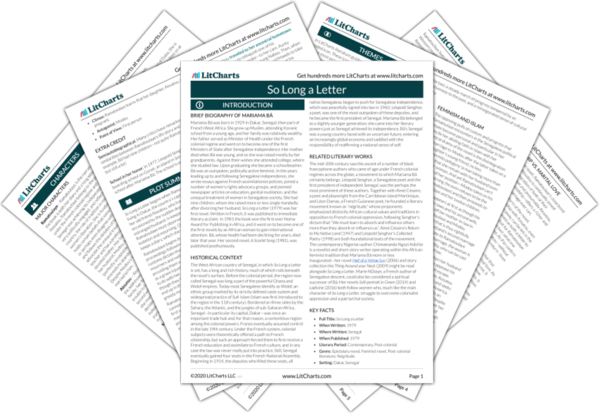The mid-20th century saw the ascent of a number of black francophone authors who came of age under French colonial regimes across the globe, a movement to which Mariama Bâ certainly belongs. Léopold Senghor, a Senegalese poet and the first president of independent Senegal, was the perhaps the most prominent of these authors. Together with Aimé Césaire, a poet and playwright from the Carribbean island Martinique, and Léon Damas, a French Guianese poet, he founded a literary movement known as “négritude,” whose proponents emphasized distinctly African cultural values and traditions in opposition to French colonial oppression, following Senghor’s dictum that “We must learn to absorb and influence others more than they absorb or influence us.” Aimé Césaire’s
Return to My Native Land (1947) and Léopold Senghor’s
Collected Poetry (1998) are both foundational texts of the movement. The contemporary Nigerian author Chimamanda Ngozi Adichie is a novelist and short-story writer operating within the African feminist tradition that Mariama Bâ more or less inaugurated—her novel
Half of a Yellow Sun (2006) and story collection the
Thing Around your Neck (2009) might be read alongside
So Long a Letter. Marie NDiaye, a French author of Senegalese descent, could also be considered a spiritual successor of Bâ. Her novels
Self-portrait in Green (2014) and
Ladivine (2016) both follow women who, much like the main character of
So Long a Letter, struggle to overcome colonialist oppression and a patriarchal society.
